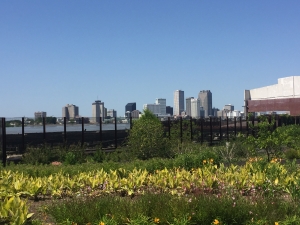I recently spent 5 days exploring the beautiful city of New Orleans, Louisiana. There’s something so exciting and thrilling about a new city, you compare and contrast, eat, drink, explore and by the end of it, if you are lucky, you’re excited to return to your home.

I was in New Orleans for the National Planning Conference for the American Planning Association. I have a degree in urban planning so this is a conference that is very highly regarded among people in my profession. In our current changing climate it is always interesting to see what the hot topics of this conference will be. This year many sessions were focused on how to plan for the autonomous vehicle, citizen engagement and green infrastructure.
he green infrastructure ones were the ones that I was most excited about. This year for my impact project I will be working with Detroit Future City. Green Infrastructure has been a big topic between myself and Victoria, my liaison from DFC. Green Infrastructure is a way to combat some of the new water tax property owners will begin having on their water bills beginning in July of this year, 2018. This new tax stems from the fact that Detroit has 9 CSO’s (Combined Sewer Overflows), that means that when there are heavy rains, the rain run off combines with sewage, which no one enjoys, least of all the EPA. That being said, the EPA cracked down on cities across the country with CSO’s ensuring they fixed them, which is costly, which is where the water tax comes into play. Every property owner will be taxed based off of the amount of impermeable surface they have, basically anything that water cannot easily absorb into, think a house, garage, driveway, patio, etc. So these green infrastructure initiatives look at using rain barrels, permeable pavement, rain gardens, bioswales and other ways to capture rainwater rather than it becoming runoff.
